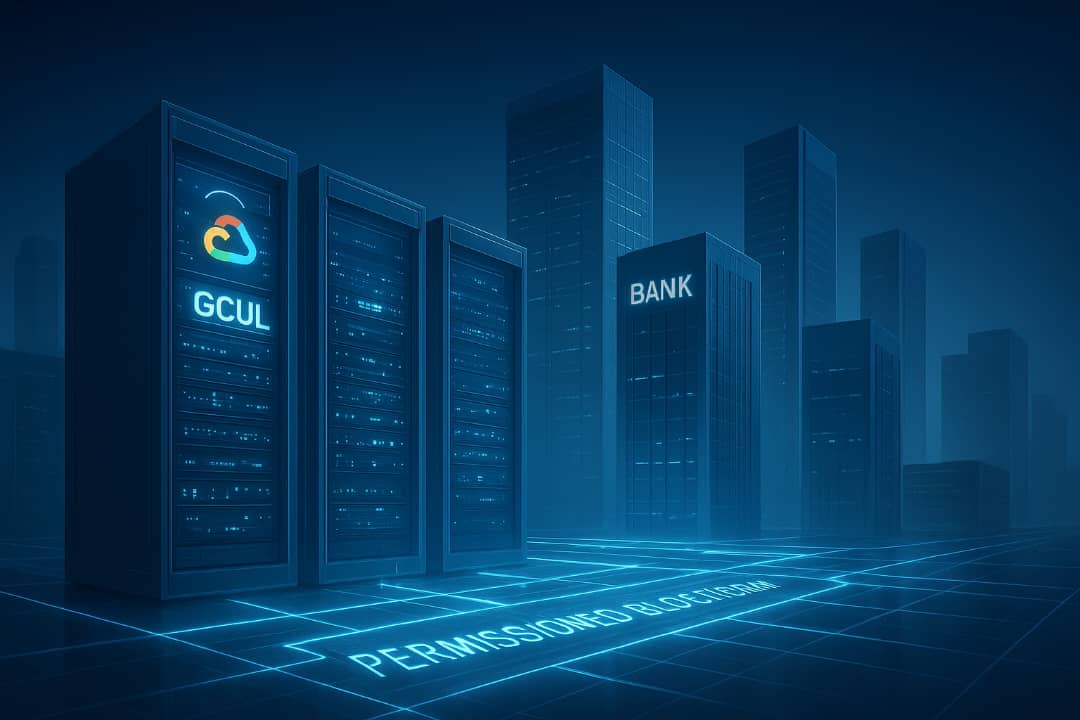Google Cloud has entered the blockchain race with a project aimed at institutions, not retail crypto. Its new Layer-1 network, Google Cloud Universal Ledger (GCUL), is now live in private testnet.
The goal? Fix cross-border payments and asset settlements with the reliability big banks demand—without the chaos of open crypto networks.
Earlier this year, Google Cloud confirmed a pilot partnership with the Chicago Mercantile Exchange (CME) to explore tokenized assets. That pilot is already through phase one. If testing stays on track, participant onboarding lands in 2025, with new services rolling out in 2026.
https://twitter.com/WuBlockchain/status/1960552104533340621?t=E2TE8Xm6uf5VeMBgQ5er1Q&s=19
More details surfaced this week, giving us a clear look at what GCUL is—and what it isn’t.
GCUL: What It Is and Isn’t
GCUL isn’t trying to be Ethereum or Solana. This is enterprise-first infrastructure built for regulated players—banks, exchanges, clearinghouses. It trades decentralization for reliability, billing APIs, and compliance tools straight out of Google Cloud’s playbook.
- Not a public chain: GCUL is permissioned. Only KYC’d participants get access. No anonymous validators, no public token.
- Enterprise-grade reliability: Think uptime SLAs, enterprise security, and direct support from Google Cloud.
- Smart contracts: Python-based programmability is in the works, but this isn’t DeFi playground stuff. It’s for settlement logic, fee automation, and financial workflows.
- Institution-neutral rails: Google pitches GCUL as “neutral” infrastructure—no single bank or issuer in control.
The CME pilot focuses on collateral, margin, settlement, and fee payments—all the behind-the-scenes mechanics that power global finance. If it works, this isn’t about retail traders or meme coins. It’s about the pipes moving billions between institutions.
Why GCUL Matters
For years, banks have tiptoed around crypto. Public chains move fast but carry compliance risks. Private chains lack scale and neutrality. GCUL aims to solve both.
Google Cloud brings:
- Scalable infra banks already trust.
- Compliance features regulators demand.
- Programmable rails for tokenization experiments.
If GCUL ships, expect collateral and payments pilots first. DeFi integrations? Not likely anytime soon. The focus here is TradFi modernization—faster settlements, programmable assets, global reach—without touching a public blockchain.
The Bigger Picture
Tokenization has been the buzzword of the year. BlackRock, JPMorgan, and others have made moves. But most experiments hit bottlenecks: regulatory hurdles, tech limitations, or lack of institutional trust.
Google Cloud changes that equation. Banks already use its infrastructure for storage, AI, and analytics. Now, with GCUL, they get a blockchain-like system without the crypto drama.
This isn’t about speculation or trading tokens. It’s about streamlining processes that still rely on legacy systems. Cross-border payments, collateral management, and fee settlements could all speed up under a single programmable ledger.
The CME pilot gives GCUL credibility. CME runs one of the world’s largest derivatives markets. If they see value in tokenized settlements, others will follow.
Phase two testing kicks off in 2025 with participant banks. By 2026, GCUL could support live services—if regulators and institutions stay on board.
For now, the project sits in private testnet. Google Cloud hasn’t released technical specs beyond Python-based smart contracts and API integrations.
Neutral Rails, Enterprise Focus
Google calls GCUL “neutral rails.” Unlike networks tied to a single bank or issuer, GCUL sits above the fray. It offers shared infrastructure for multiple players—banks, clearinghouses, payment providers—without locking them into one ecosystem.
That neutrality could be its edge. Institutions want control and privacy. They also want interoperability and reliability. GCUL promises both.
Bottom Line
GCUL isn’t trying to replace public crypto networks. It’s building infrastructure for regulated finance—a programmable, permissioned ledger that fits within existing compliance frameworks.
If it delivers, GCUL could become the backbone for tokenized settlements, starting with CME pilots and expanding into global finance by 2026.
Disclosure: This is not trading or investment advice. Always do your research before buying any cryptocurrency or investing in any services.
Follow us on Twitter @themerklehash to stay updated with the latest Crypto, NFT, AI, Cybersecurity, and Metaverse news!

